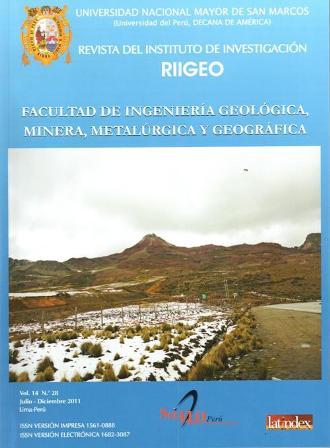Development of a prototype of human bone from plant tagua. In vitro biocompatibility tests
DOI:
https://doi.org/10.15381/iigeo.v14i28.674Keywords:
Clavicle, Tagua Plant, Biocompatibility, HOS cells, cytotoxicityAbstract
This paper deals with the scale development of a prototype of a clavicle from tagua plant, which was subjected to mechanical testing and in vitro biocompatibility tests in this part of the work emphasizes the biocompatibility tests performed. The biocompatibility of a biomaterial depends on various factors such as their surface characteristics, its structural composition and the coatings used on them. The analysis of the biocompatibility of the biomaterial from tagua plant developed by in vitro assays using cultured cell line HOS from human osteosarcoma cells were cultured in RPMI 1640 supplemented with 10% fetal of tagua. Biomaterial samples were subjected to evaluate cell proliferation by microscopic counting in a Neubauer chamber at different times, different concentrations of bone powder allowed to evaluate the cytotoxicity by the addition of MTT and reading in spectrophotometer; also included a test cell adhesion and morphology at different times by epifluorescence microscopy. The results indicate that the plant does not favor tagua cell proliferation, cytotoxicity presenting the biomaterial is of grade 3 and moderate reactivity, adhesion occurs only on the specimen to 24 hours and in terms of morphology is not possible to make a quantitative assessment , since the number of cells present is only possible to view the core.
Downloads
Published
Issue
Section
License
Copyright (c) 2011 Walter Pardavé., Angélica Plazas., Rosa Delia Torres.

This work is licensed under a Creative Commons Attribution-NonCommercial-ShareAlike 4.0 International License.
AUTHORS RETAIN THEIR RIGHTS:
a. Authors retain their trade mark rights and patent, and also on any process or procedure described in the article.
b. Authors retain their right to share, copy, distribute, perform and publicly communicate their article (eg, to place their article in an institutional repository or publish it in a book), with an acknowledgment of its initial publication in the Rev. Inst. investig. Fac. minas metal cienc. geogr.
c. Authors retain theirs right to make a subsequent publication of their work, to use the article or any part thereof (eg a compilation of his papers, lecture notes, thesis, or a book), always indicating the source of publication (the originator of the work, journal, volume, number and date).






